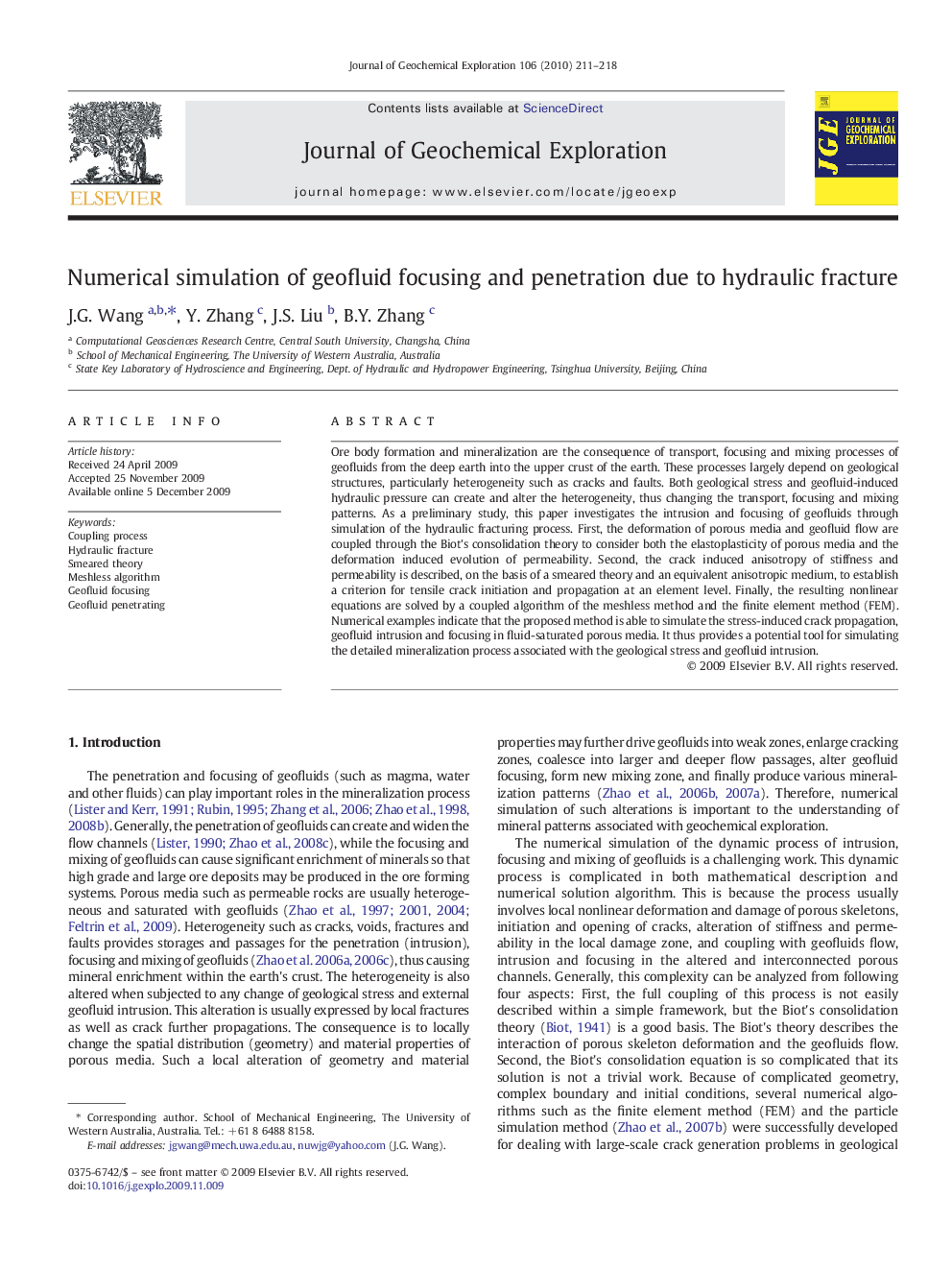| Article ID | Journal | Published Year | Pages | File Type |
|---|---|---|---|---|
| 4458014 | Journal of Geochemical Exploration | 2010 | 8 Pages |
Ore body formation and mineralization are the consequence of transport, focusing and mixing processes of geofluids from the deep earth into the upper crust of the earth. These processes largely depend on geological structures, particularly heterogeneity such as cracks and faults. Both geological stress and geofluid-induced hydraulic pressure can create and alter the heterogeneity, thus changing the transport, focusing and mixing patterns. As a preliminary study, this paper investigates the intrusion and focusing of geofluids through simulation of the hydraulic fracturing process. First, the deformation of porous media and geofluid flow are coupled through the Biot's consolidation theory to consider both the elastoplasticity of porous media and the deformation induced evolution of permeability. Second, the crack induced anisotropy of stiffness and permeability is described, on the basis of a smeared theory and an equivalent anisotropic medium, to establish a criterion for tensile crack initiation and propagation at an element level. Finally, the resulting nonlinear equations are solved by a coupled algorithm of the meshless method and the finite element method (FEM). Numerical examples indicate that the proposed method is able to simulate the stress-induced crack propagation, geofluid intrusion and focusing in fluid-saturated porous media. It thus provides a potential tool for simulating the detailed mineralization process associated with the geological stress and geofluid intrusion.
